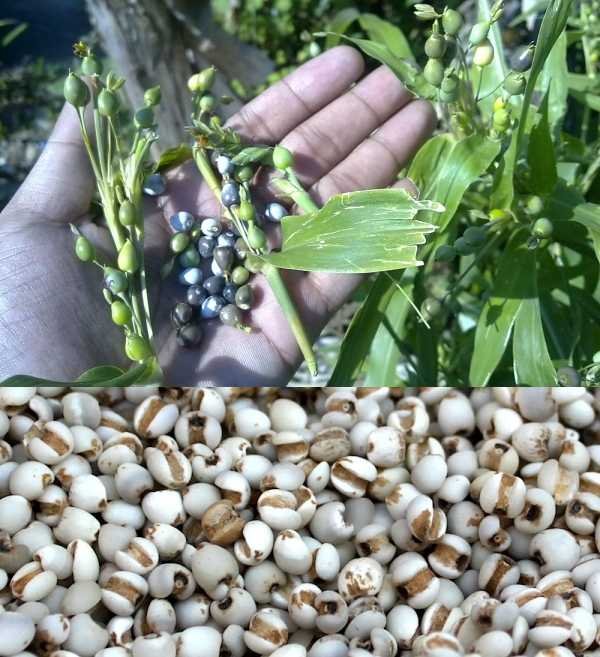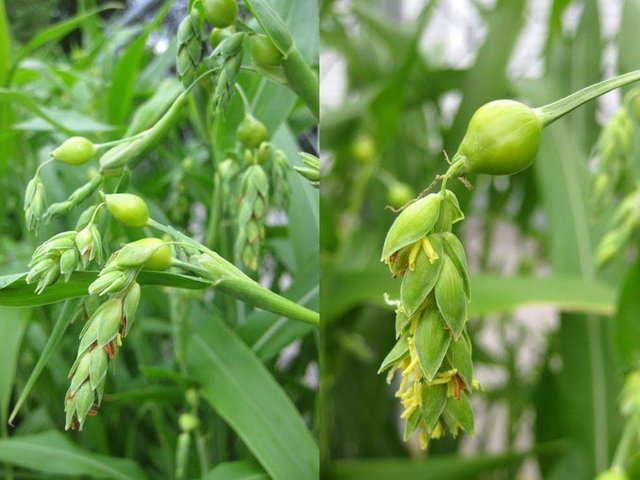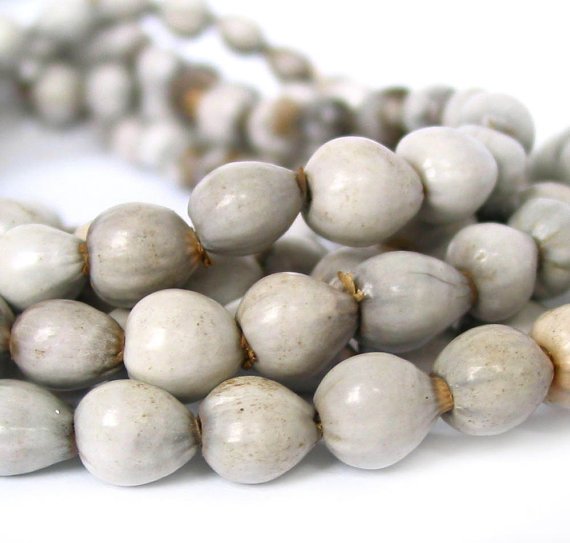Adlai, A Never Heard Crop (Job's Tears)
It has better carbohydrate content than rice and can withstand harsh weather and need little care yet no attention is being given on this plant.
It also has 3x more calories and 6x more protein than rice and is regarded as a cure for diabetes.

Job's Tears or adlai, is a tall grain-bearing tropical plant native to Southeast Asia. In its native environment it is grown in higher areas where rice and corn do not grow well.
Besides the use for ornamental purposes, Job's tears grains are useful as a source of food (cereals) and folk medicine.
A while ago as i read along how this plant could be useful as a staple food and alternative medicine, I can't help but laugh as i recall my childhood memories with this tall grass.
I grew up seeing this plant grow in abundance along the riverside of Cagayan Valley. As a kid being a native Ybannag, we knew of its usefulness as we made use of its grains as beeds for making porselas (indigenous bracelets), and as an ammo for both sumpak (bamboo canon) and sumpit (blow pipe).
Porselas (bracelet)
Sumpak(bamboo canon)
Sumpit (blow pipe)

Little did we know, i bet our elders too didn't know it could be eaten as a staple food. The closest thing our elders did was to teach us that it can be fed to doves pigeons, game fowls and other bird pets we had.
The crop is known to have anti-inflammatory, antihistaminic, muscle relaxant, fever reducing and sugar lowering properties.
I loved eating rice champorrado as a child (although I havent tasted the ones using adlai) - cooked with tablea de cacao, coco sugar and swirled with the guilty pleasure of condensed milk
Planted by the indigenous tribes, it is gluten free, has low glycemic index and rich in B Vitamins, iron and calcium
Our ancestors from the Southern Philippines cultivated this ancient grain as a staple. It grows like grass. You can plant it anywhere and it thrives well despite a harsh climate
Farmers can harvest 5 to 6 times a year!
Adlai has been included in Department of Agriculture food-security blueprint for its potential use as an alternative staple food for rice and corn.
It was known to have been used by our ancestors for treating abscess, anodyne, anthrax, appendicitis, arthritis, beri beri, bronchitis, catarrh, diabetes, dysentery, dysuria, edema, fever, goiter, halitosis, headache, hydrothorax, metroxenia, phthisis, pleurisy, pneumonia, puerperium, rheumatism, small-pox, splenitis, strangury, tenesmus, and worms although claims still needs to be verified by scientific evidences.
Some studies also suggests that adlai has anti-allergic, anti-mutagenic, hypolipemic and anti-diabetic effects. (BAR Chronicles, 2011)
Other Readings:
https://steemit.com/philippines/@tjpezlo/healing-wonders-of-tawa-tawa-snake-weed-plant
https://steemit.com/academia/@tjpezlo/6-non-marijuana-source-of-cannabinoid-compounds
https://steemit.com/academia/@tjpezlo/helichrysum-umbraculigerum-your-coral-love-daisy
https://steemit.com/academia/@tjpezlo/liverwort-radula-marginata-the-medical-lichen
https://steemit.com/academia/@tjpezlo/hidden-wonders-of-dark-chocolates
https://steemit.com/academia/@tjpezlo/black-pepper-the-king-of-spices
https://steemit.com/academia/@tjpezlo/brazillian-toothache-plant-cocaine-gums
https://steemit.com/weed/@tjpezlo/here-s-a-weed-you-might-want-to-try
https://steemit.com/academia/@tjpezlo/a-weed-with-suprising-health-benefits-dandelions
Sources:
http://foodrecap.net/health/adlai-plant/
http://business.inquirer.net/218105/developing-promoting-adlai-as-alternative-staple-food


Awesome post! I love reading about little known plants with so many beneficial properties.